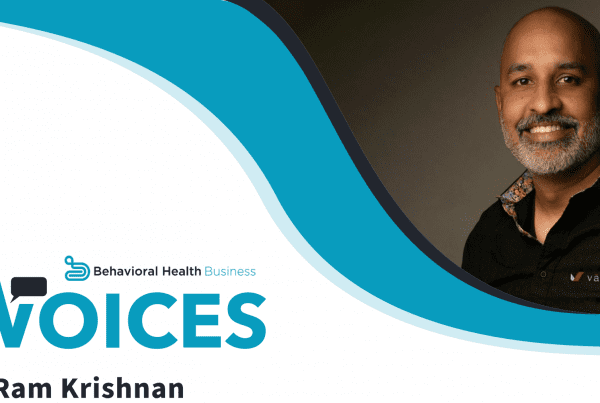A recent federal law called the National Suicide Hotline Designation Act of 2020 requires that the National Suicide Prevention Lifeline be made available via dialing or texting a 3-digit number (988), in addition to the prior 10-digit number (800-273-TALK). The 988 hotline was fully implemented nationwide in July 2022 and is important to behavioral health practitioners and patients for several reasons.
Introduction to 988 and Its Importance
The existing National Suicide Prevention Lifeline has been around since 2005, and connects callers and texters across a nationwide network of over 180 crisis centers in various areas of the United States. The 988 implementation simply makes this lifeline available in a convenient and easy-to-remember 3-digit phone number. The hotline is available 24/7/365, although not all individual crisis centers operate on a round-the-clock basis, and it connects callers and texters with nearby crisis centers and local resources in accordance with their needs.
One reason the 988 hotline is crucial to behavioral health is that research shows timely intervention is critical to preventing suicides. The decision to take one’s own life is often made hastily, in a poor state of mental health. Any helping hand is desirable and could make the difference to save a potential victim’s life. The 988 hotline is sure to be much more memorable to individuals than the old 10-digit phone number, meaning that they are more likely to use it in a critical moment of need. This will promote behavioral health by delaying and thereby preventing individuals from succumbing to suicide.
Another reason the 988 behavioral health phone number is important is that it will divert many individuals who would otherwise have called 911. A 2021 report from the Technical Assistance Collaborative notes that contacts with the National Suicide Prevention Lifeline are far more likely to connect an individual with behavioral health clinicians who are well equipped to aid individuals undergoing a mental health crisis, whereas callers to 911 are more likely to result in a law enforcement response which might be inappropriate for callers’ needs and divert police resources from other important emergencies.
Overall, the 988 hotline raises awareness of suicide prevention and helps destigmatize and promote reaching out for help, especially when one’s behavioral health practitioner is unavailable.
988 Implementation and How It Affects Your Practice
According to many experts, the 988 implementation should be shared with all of your behavioral health patients, even if you do not think they will need it. Awareness of the availability of the hotline is important, as spreading the word helps promote behavioral health and may even help individuals who are not under your care via word of mouth.
As you share information about the 988 hotline with your patients, it is important to clarify their expectations of what the hotline does and what will be asked. First, it should be made clear that the 988 behavioral health phone number is not a substitute for your role as the primary behavioral health care provider, so it is advisable to suggest patients first reach out to you or your office if their crisis situation is during office hours and is not an emergency. The hotline is also not a substitute for 911, so if your patient is in an immediate life-threatening emergency situation, they should dial 911.
Your patients should know that staff on the 988 hotline will assess their needs by asking questions and gathering information. They may ask about their primary behavioral health provider, assess the caller’s mental health status, and make recommendations or referrals as appropriate, such as to local mental health facilities or other resources. In an emergency situation, they will deploy an emergency response if necessary. However, you may want to emphasize to patients who are concerned about being involuntarily placed on a psychiatric hold or receiving an unwanted police response that the 988 hotline is less likely to result in this, as compared with 911.
Another concern that should be mentioned is that during busy times there may be a wait, as it already fielded over 2 million contacts a year under the old, longer 10-digit phone number, and this is only anticipated to increase with the 988 implementation. Nevertheless, the 988 behavioral health hotline is intended for mental health crises of relative urgency. There may be other “warm lines” that should be shared with patients for emotional support and finding behavioral health resources, such as your office line, an affiliated managed care provider’s hotline, local agencies, or 211 or 311. Lastly, you should inform patients that they can contact the 988 hotline both via phone call and text message.
988 and Its Effect On Behavioral Health as a Whole
The creation of the 988 behavioral health hotline is a watershed moment in recognizing the importance of mental health and suicide prevention in the United States. Suicide is the leading cause of death in some age groups, with 47,646 suicides and over 1 million attempted suicides occurring in the year 2021 alone. This means death by suicide is even more common than death by motor vehicle accident in the United States. Prevention of suicide requires a cohesive, holistic, and multi-pronged approach that takes into account behavioral health as well as interpersonal and community connections. The 988 implementation is an essential piece of this puzzle.
To continue providing services, the National Suicide Prevention Lifeline requires consistent and reliable funding. Although mental health is broadly supported in public opinion, government funding is often hard to come by. Behavioral health practitioners can help as public policy advocates and push for continued funding. The risk is that the 988 hotline’s local crisis centers will be unable to accommodate the needs of all callers and texters, especially at peak times, holidays, and night shifts, when fewer staff and volunteers are available. Finally, connecting all the pieces together remains a challenge, as patients may neglect or not know how to follow up on their behavioral health needs and practitioners may not be well-equipped to track these pain points and steer patients in the right direction. An effective electronic health record (EHR) system can aid behavioral health practitioners with establishing these safety nets and workflows.





